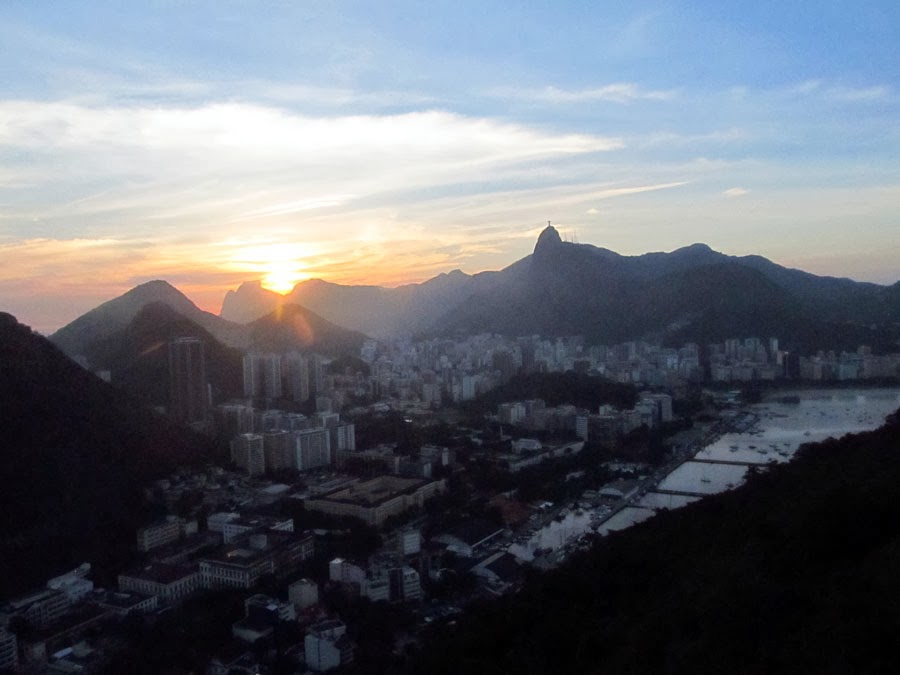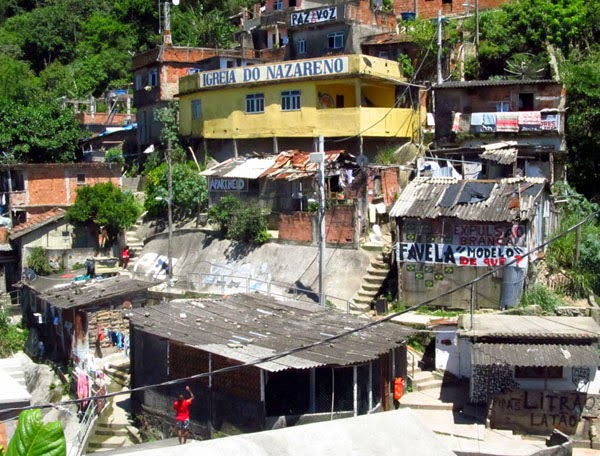Chapada Diamantina Lencois, Bahia
With only one false start and two moments of panic, the intrepid 4 of Judy, Louise, Sarah, and Julie hopped a 7+ hour overland bus to the interior of Bahia, headed for the National Park of Chapada Diamantina. Just at sundown the bus pulled into a rest stop station where we ~enjoyed~ roadside food. Later, in pitch dark, when the bus stopped still for many minutes way out in the wilderness we wondered..... "where are we and what is going on???"
 |
| Roadside rest stop just before dark. |
Lencois is charming and friendly to tourists from Brazil and abroad with colorful buildings and plazas on cobblestone roadways. Geared for tourists to this natural wonderland, the town is filled with charming and rustic cafes and shops. Each evening there was live music at a town square grandstand.
In these photos Lencois appears deserted but such was not the case. A friendly mix of locals and visitors ambled pleasantly throughout the charming town.
Yes rainbows appear frequently.
 |
| Saturday market in Lencois |
 |
| Julie and Sarah prepare for our first day tour in front of Pousada Corona de Pedra run by Floristan and wife Talita who baked coconut and fruit cakes daily for the yummy breakfasts. |
Diego, our ebullient Guide: a little person with a broad smile and a huge heart.
For 2 long full days we bounced and jostled and rumbled and rolled many kilometers on paved, non-paved, and almost non-existent roads.
 |
| Pica Pau 4 |
 |
| Please note the height differential in our jolly gang of 6 |
 |
Outfitted with headlamps (would OSHA approve?) at Popo Atazul, wearing headlamps, we crawled deep down into underground caverns with waters of azure blue |

At Popo Encantata we gingerly scrambled down constructed stairways to float blissfully in cool cobalt blue pools of subterranean water;

 |
| Lovely rock light shaft into Popo Encantata. |
 |
| Sarah emerges |
 Is that a road or a rock?
Is that a road or a rock?At Pratinha I overcame years of snorkeling fear dove and swam in black waters after driving across pure rock "roadways". Julie, Louise, and I donned snorkeling gear to swim deep under the rocks into the darkness. Guided by a whistling (non-English-speaking) Brazilian guide, equipped with a wrist light, mask, flippers, and life vests sufficient for much larger folks than we, our snorkeling adventure took us deep into the cool dark (and darkest....and pitch darkest) waters of the river. Magically, Louise sang in the deep reverberating caverns as we drifted our way out. Julie said "it takes a lot of trust to breathe while snorkeling", and thereby empowered, I found this a magical experience.
 |
| Empowered |
Across the river from the cave was a local riverside swimming area like untold hundreds of thousands of places around the world, locals enjoying youth, the sun, and the water.
 Deep blackwater ponds are not unusual in Bahia. The clear water is stained due to minerals in the rocks and soils.
Deep blackwater ponds are not unusual in Bahia. The clear water is stained due to minerals in the rocks and soils.
The locals are well-aware of the 'over-here' visitors.
DIEGO - also known as "Do Do" !!!!!!
Diego was spectacular! He talked, ate, and pranced about with a zeal that entertained all of us. His broad smile, his caring attention to Sarah, his grand appetite for life, and his antics and high-jinks were enjoyed by all. Some guides are just making a living but Diego was living the life
 |
| Not once but twice Diego flung himself off a cliff top into the blackwater. |
We enjoyed meeting Diego's wife and mother-in-law at the Sunday evening Catholic church service where his brother-in-law is the local priest.
We asked him if we might attend and Diego swelled with pride from our visit.
 |
| What a pair!!! |














































